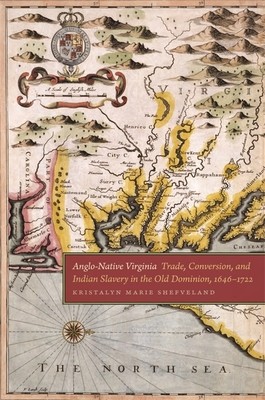
- We will send in 10–14 business days.
- Author: Kristalyn Marie Shefveland
- Publisher: University of Georgia Press
- ISBN-10: 0820350257
- ISBN-13: 9780820350257
- Format: 15.2 x 22.9 x 1.4 cm, kieti viršeliai
- Language: English
- SAVE -10% with code: EXTRA
Reviews
Description
The 1646 Treaty of Peace with Necotowance in Virginia fundamentally changed relationships between Native Americans and the English settlers of Virginia. Virginians were unique in their interaction with Native peoples in part because of their tributary system, a practice that became codified with the 1646 Treaty of Peace with the former Powhatan Confederacy. This book traces English establishment of tributary status for its Native allies and the phrasing and concept of foreign Indians for non-allied Natives.
Kristalyn Marie Shefveland examines Anglo-Indian interactions through the conception of Native tributaries to the Virginia colony, with particular emphasis on the colonial and tributary and foreign Native settlements of the Piedmont and southwestern Coastal Plain between 1646 and 1722. Shefveland contends that this region played a central role in the larger narrative of the colonial plantation South and of the Indian experience in the Southeast. The transformation of Virginia from fledgling colony on the outpost of empire to a frontier model of English society was influenced significantly by interactions between the colonizers and Natives. Many of the powerful families that emerged to dominate Virginia's history gained their start through Native trade and diplomacy in this transformative period, particularly through the Byrd family, whose members emerged as key figures in trade, slavery, diplomacy, and conversion. By the second half of the seventeenth century, the transformation of Virginia set forth political, economic, racial, and class distinctions that typified the state for the next three centuries.EXTRA 10 % discount with code: EXTRA
The promotion ends in 23d.19:58:26
The discount code is valid when purchasing from 10 €. Discounts do not stack.
- Author: Kristalyn Marie Shefveland
- Publisher: University of Georgia Press
- ISBN-10: 0820350257
- ISBN-13: 9780820350257
- Format: 15.2 x 22.9 x 1.4 cm, kieti viršeliai
- Language: English English
The 1646 Treaty of Peace with Necotowance in Virginia fundamentally changed relationships between Native Americans and the English settlers of Virginia. Virginians were unique in their interaction with Native peoples in part because of their tributary system, a practice that became codified with the 1646 Treaty of Peace with the former Powhatan Confederacy. This book traces English establishment of tributary status for its Native allies and the phrasing and concept of foreign Indians for non-allied Natives.
Kristalyn Marie Shefveland examines Anglo-Indian interactions through the conception of Native tributaries to the Virginia colony, with particular emphasis on the colonial and tributary and foreign Native settlements of the Piedmont and southwestern Coastal Plain between 1646 and 1722. Shefveland contends that this region played a central role in the larger narrative of the colonial plantation South and of the Indian experience in the Southeast. The transformation of Virginia from fledgling colony on the outpost of empire to a frontier model of English society was influenced significantly by interactions between the colonizers and Natives. Many of the powerful families that emerged to dominate Virginia's history gained their start through Native trade and diplomacy in this transformative period, particularly through the Byrd family, whose members emerged as key figures in trade, slavery, diplomacy, and conversion. By the second half of the seventeenth century, the transformation of Virginia set forth political, economic, racial, and class distinctions that typified the state for the next three centuries.

Reviews